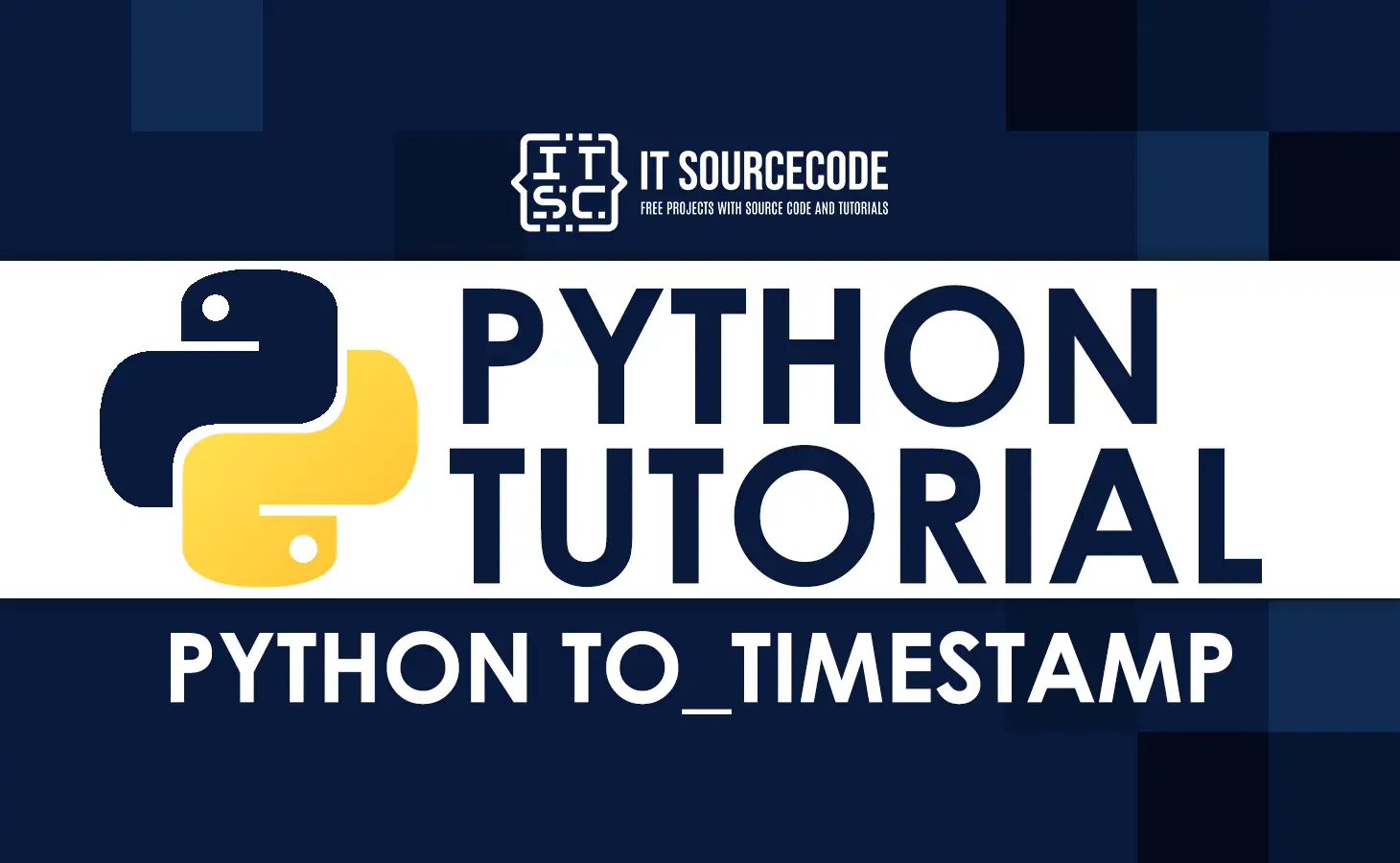In this tutorial, we look at what Python to_timestamp is and the easiest way to implement it. We will understand how to import timestamp, get time in pandas, and convert strings to timestamp to date and time.
Introduction
Python is a great language for analyzing data, mostly because it has a great ecosystem of packages that focus on data. Pandas is one of these packages, and it makes it much easier to import data and look at it.
A timestamp is a date and time that an event takes place. In Python, we can get an event’s timestamp within a few milliseconds. Python’s timestamp format gives back the amount of time that has passed since the epoch time, which is set to 00:00:00 UTC on January 1, 1970.
What is Python to_timestamp?
Pandas Period.to_timestamp() function returns the Timestamp representation of the Period at the target frequency at the specified end (how) of the Period.
Syntax
Period.to_timestamp()
Parameters :
- freq : Target frequency. Default is ‘D’ if self.freq is week or longer and ‘S’ otherwise.
- how : ‘S’, ‘E’. Can be aliased as case insensitive ‘Start’, ‘Finish’, ‘Begin’, ‘End’
- Return : Timestamp
Pandas DataFrame.to_timestamp(~) method converts the row index or column index to DatetimeIndex.
Parameters:
- freq: str, default frequency of PeriodIndex.
- how: {‘s’, ‘e’, ‘start’, ‘end’}. How to turn a period into a timestamp; start of period vs. end of the period.
- axis: {0 or ‘index’, 1 or ‘columns’}, default 0. Axis to be converted (the index by default).
- copy: bool, default True. If False, then the original data that was put in is not copied.
- Returns : DataFrame with DatetimeIndex
Example program
import pandas as pd
prd = pd.Period(freq ='S', year = 2000, month = 2, day = 22,
hour = 8, minute = 21, second = 24)
print(prd)We use the Period.to_timestamp() method to return the specified period as a Timestamp object at the specified frequency. Then, now we will use the Period.to_timestamp() function to return the given period object as a timestamp object.
What is PD timestamp?
Pandas pandas.Timestamp() function returns the time expressed as the number of seconds that have passed since January 1, 1970. That zero moment is known as the epoch.
Replacement of Pandas python datetime.datetime object.
The timestamp is the panda equivalent of python’s Datetime and is interchangeable with it in most cases. It’s the type used for the entries that make up a DatetimeIndex, and other timeseries-oriented data structures in pandas.
| Parameters | Description |
| ts_input | datetime-like, str, int, float. The value to convert to a timestamp. |
| freq | str, DateOffset Set the start time for the Timestamp. |
| tz | str, pytz.timezone, dateutil.tz.tzfile or None The time zone for the time that will be in the Timestamp. |
| unit | str The conversion unit to use if ts_input is of type int or float. These are the permitted values: ‘D’, ‘h’,’m’,’s’,’ms’, ‘us’, and ‘ns’. For instance, ‘s’ represents seconds and ‘ms’ represents milliseconds. |
| year, month, day | int |
| hour, minute, second, microsecond | int, optional, default 0 |
| nanosecond | int, optional, default 0 |
| tzinfo | datetime.tzinfo, optional, default None |
| fold | {0, 1}, default None, keyword-only |
How do I get time in pandas?
import pandas as pd
import datetime
timestamp = pd.Timestamp(datetime.datetime(2021, 10, 10))
print("Timestamp: ", timestamp)
print("Day Name:", timestamp.day_name())
res = timestamp.today()
print("\nToday's Date and time...\n", res)
print("Today's Day:", res.day_name())Output:
Timestamp: 2021-10-10 00:00:00 Day Name: Sunday Today's Date and time... 2021-10-03 13:22:28.891506 Today's Day: Sunday
How do I import a timestamp?
Example:
from datetime import datetime
timestamp = 1586507536367
dt_object = datetime.fromtimestamp(timestamp)
import time
ts = time.time()
// OR
import datetime;
ct = datetime.datetime.now()
ts = ct.timestamp() How do I convert a string to a timestamp in Python?
import time
import datetime
string = "20/01/2020"
element = datetime.datetime.strptime(string,"%d/%m/%Y")
timestamp = datetime.datetime.timestamp(element)
print(timestamp)Output
1579458600.0
Program explanation:
import datetimeis used to import the date and time modules- After importing date time module next step is to accept the date string as an input and then store it in a variable
- Then we use
strptimemethod. This method takes two arguments- The first argument is the string format of the date and time
- The second argument is the format of the input string
- Then it returns date and time value in timestamp format, and we store this in
timestampvariable.
How do you add two timestamps in Python?
import datetime as dt
t1 = dt.datetime.strptime('12:00:00', '%H:%M:%S')
t2 = dt.datetime.strptime('02:00:00', '%H:%M:%S')
time_zero = dt.datetime.strptime('00:00:00', '%H:%M:%S')
print((t1 - time_zero + t2).time())Output
14:00:00
What is timestamp value?
The timestamp value is equivalent to Datetime in Python and may be used interchangeably in most situations. It is the type used for DatetimeIndex entries and other time-series-oriented pandas data structures.
Conclusion
In this tutorial, we learned what Python to_timestamp is. We also learned how to get time in panda and import timestamp. We also convert strings to timestamps using Python. To learn more about what string is, visit our previous article.
The parameters and syntax are the easiest ways we should remember in order to get the timestamp. However, it is necessary to understand and practice it to enhance our programming skills.

